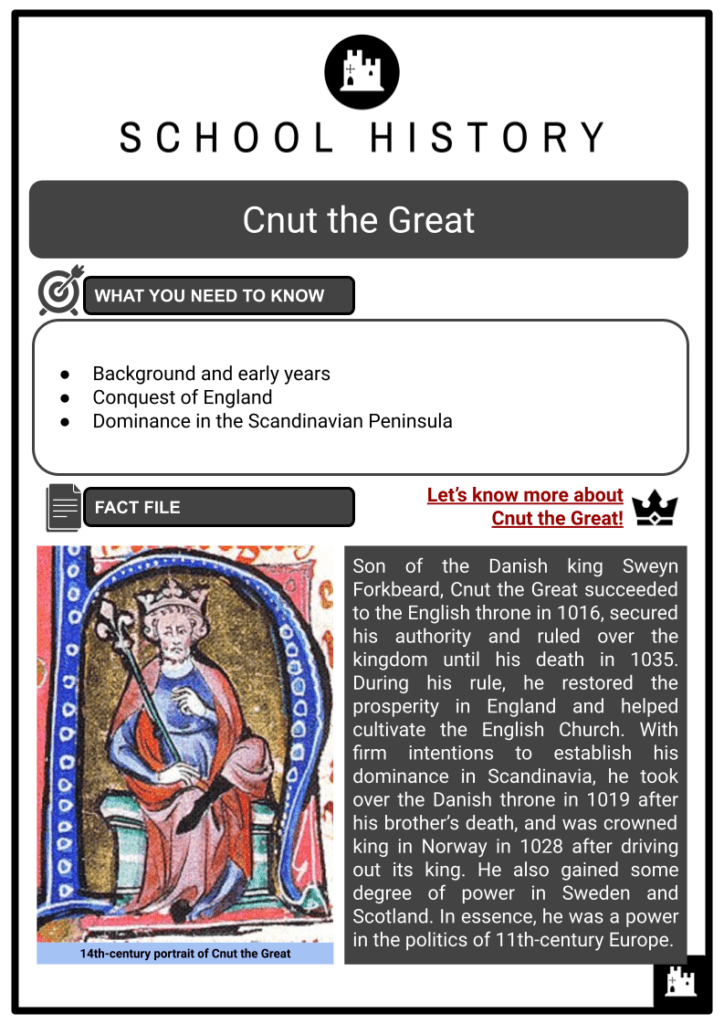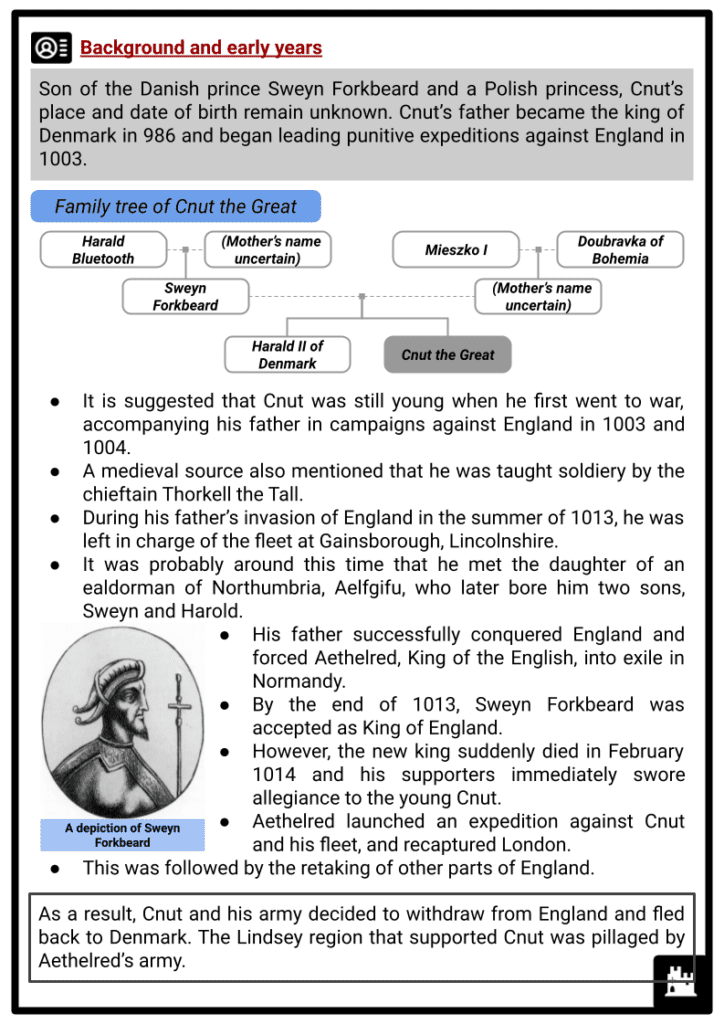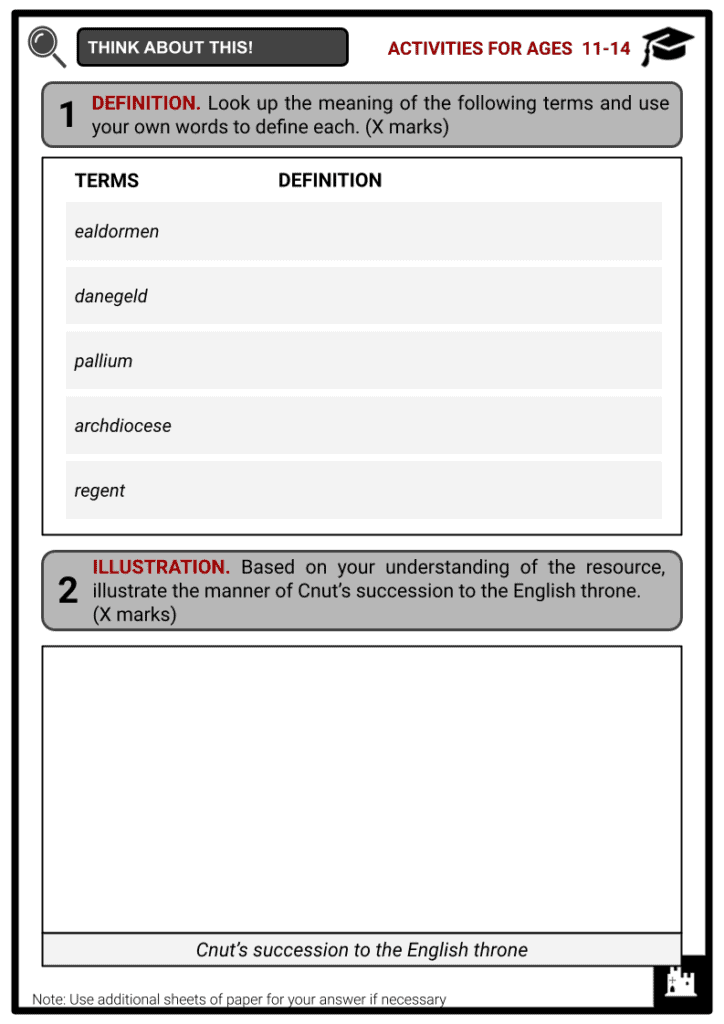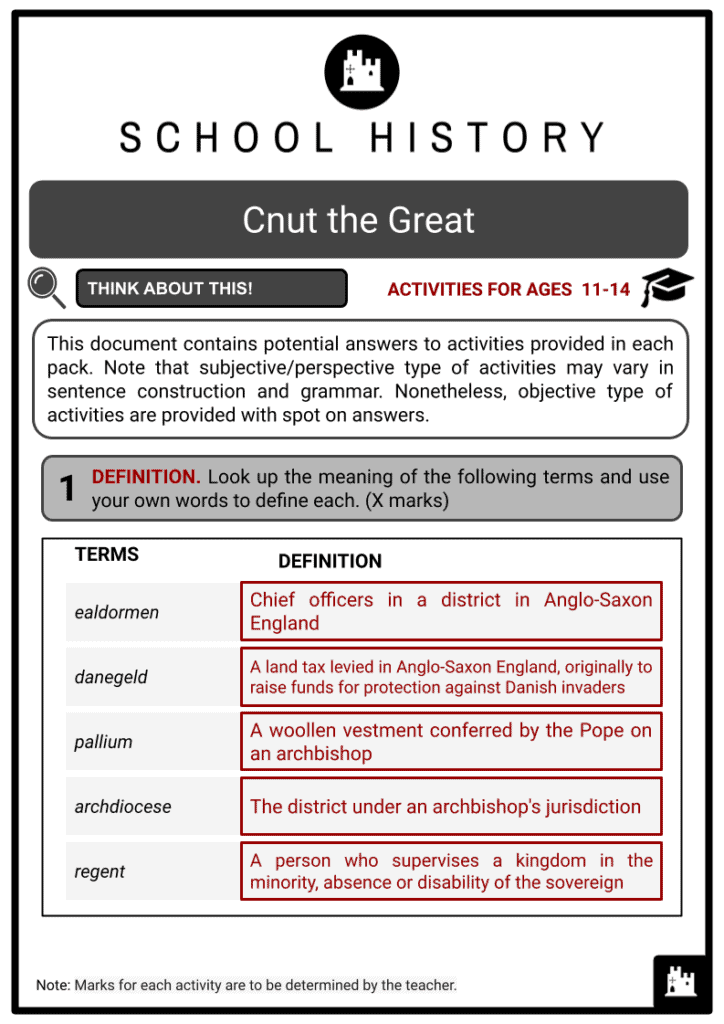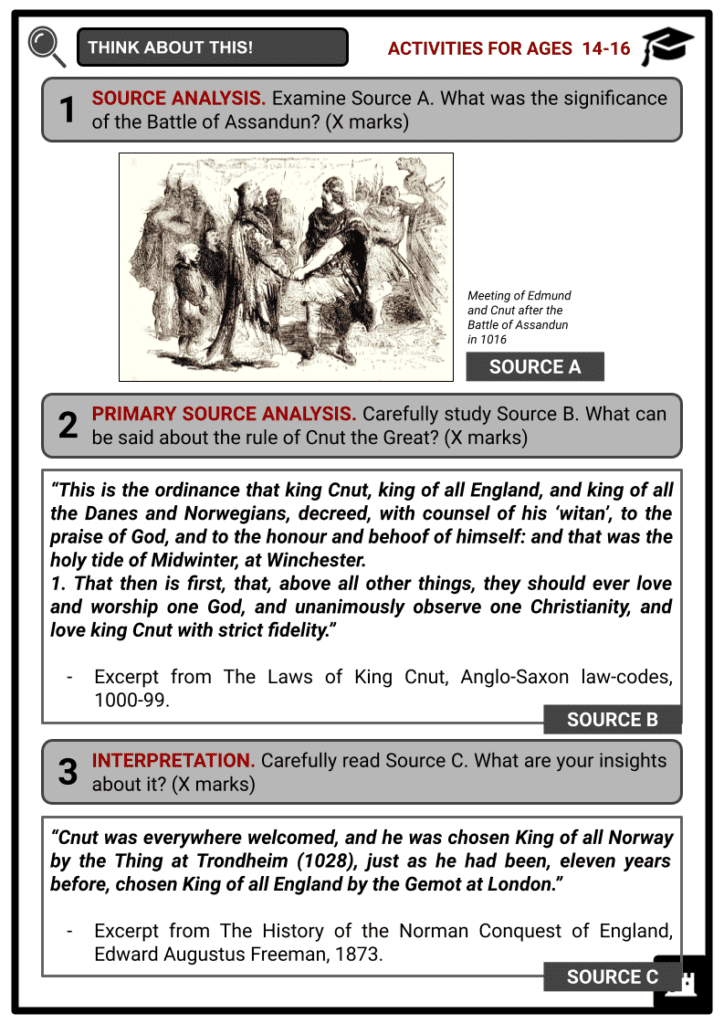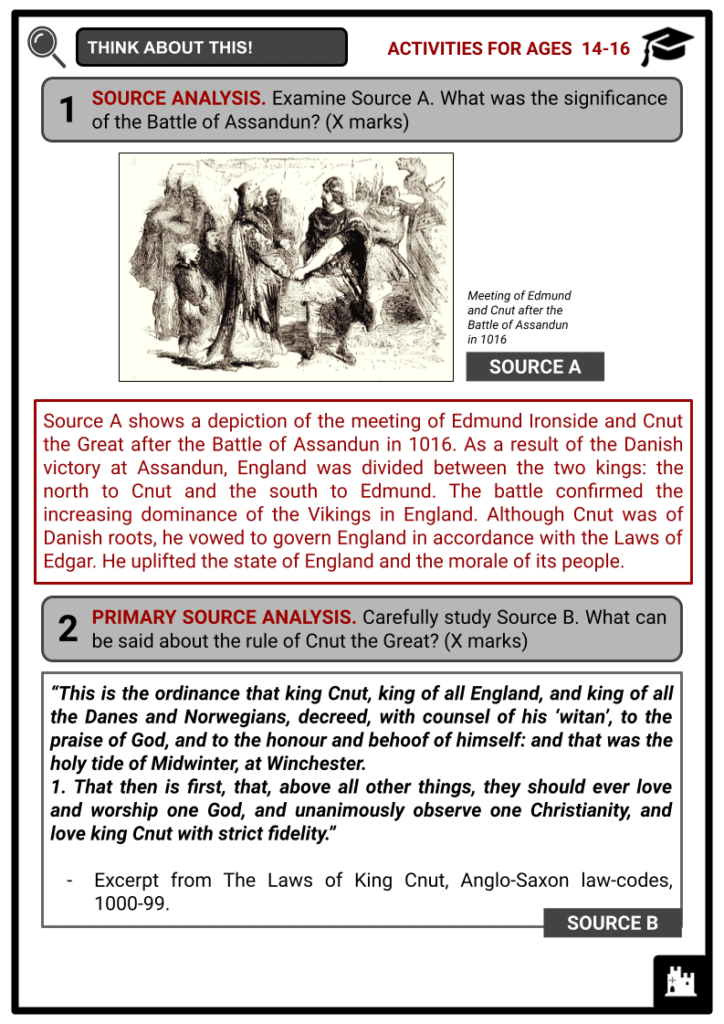Download Cnut the Great Worksheets
Do you want to save dozens of hours in time? Get your evenings and weekends back? Be able to teach about Cnut the Great to your students?
Our worksheet bundle includes a fact file and printable worksheets and student activities. Perfect for both the classroom and homeschooling!
Table of Contents
Add a header to begin generating the table of contents
Summary
- Background and early years
- Conquest of England
- Dominance in the Scandinavian Peninsula
Key Facts And Information
Let’s know more about Cnut the Great!
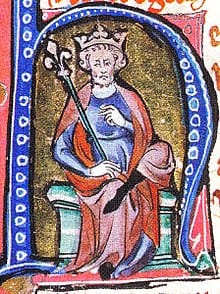
- Son of the Danish king Sweyn Forkbeard, Cnut the Great succeeded to the English throne in 1016, secured his authority and ruled over the kingdom until his death in 1035. During his rule, he restored the prosperity in England and helped cultivate the English Church. With firm intentions to establish his dominance in Scandinavia, he took over the Danish throne in 1019 after his brother’s death, and was crowned king in Norway in 1028 after driving out its king. He also gained some degree of power in Sweden and Scotland. In essence, he was a power in the politics of 11th-century Europe.
Background and early years
- Son of the Danish prince Sweyn Forkbeard and a Polish princess, Cnut’s place and date of birth remain unknown. Cnut’s father became the king of Denmark in 986 and began leading punitive expeditions against England in 1003.
- It is suggested that Cnut was still young when he first went to war, accompanying his father in campaigns against England in 1003 and 1004.
- A medieval source also mentioned that he was taught soldiery by the chieftain Thorkell the Tall.
- During his father’s invasion of England in the summer of 1013, he was left in charge of the fleet at Gainsborough, Lincolnshire.
- It was probably around this time that he met the daughter of an ealdorman of Northumbria, Aelfgifu, who later bore him two sons, Sweyn and Harold.
- His father successfully conquered England and forced Aethelred, King of the English, into exile in Normandy.
- By the end of 1013, Sweyn Forkbeard was accepted as King of England.
- However, the new king suddenly died in February 1014 and his supporters immediately swore allegiance to the young Cnut.
- Aethelred launched an expedition against Cnut and his fleet, and recaptured London.
- This was followed by the retaking of other parts of England.
- As a result, Cnut and his army decided to withdraw from England and fled back to Denmark. The Lindsey region that supported Cnut was pillaged by Aethelred’s army.
Conquest of England
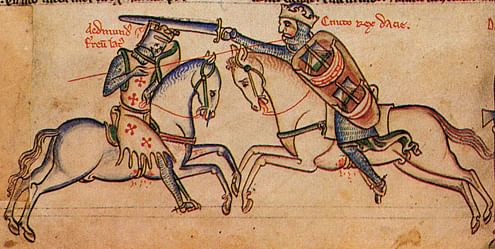
- In 1015, Cnut returned to England with a huge fleet, landed in Wessex, and began an intense campaign in several towns.
- Cnut attempted to establish his claim to sovereignty and challenged the succession of Aethelred’s son, Edmund Ironside, to the English throne upon Aethelred’s death in 1016.
- Following Cnut’s victory at the Battle of Assandun in October, England was briefly divided between two kings: Cnut reserved for himself the northern division of Mercia, East Anglia and Northumbria whilst Edmund was left with Wessex.
- When Edmund died in November, Cnut the Great became king of the whole of England.
- During his rule in England, he strengthened his authority by:
- Eiminating potential rivals such as Aethelred’s son Eadwig Atheling and a number of English noblemen
- Demanding the loyalty of all bishops and ealdormen
- Maintaining the danegeld and collecting an annual tax called heregeld through the Anglo-Saxon system to reward Scandinavians in his service
- Vowing to govern his Anglo-Saxon subjects in accordance with the Laws of Edgar
- Adapting the Anglo-Saxon system of government by dividing the kingdom into four earldoms: Wessex, Mercia, East Anglia and Northumbria
- In 1017, Cnut married Queen Emma, the widow of Aethelred and daughter of Richard I, Duke of Normandy.
- Cnut is commonly viewed a religious man. Already a Christian prior to his succession, he commissioned the repair of all the English churches and monasteries that were ravaged by the Viking raids.
- Additionally, he built new churches and supported the monastic communities.
- He also granted land and exemption from taxes to the Church.
Dominance in the Scandinavian Peninsula
- When Harald II of Denmark died, the English forces assisted Cnut to secure his position in Denmark in 1019. After ensuring that his hold on the Danish throne was stable, he returned to England and appointed the husband of his sister Estrid, Ulf Jarl, as regent of Denmark.
- Furthermore, Cnut entrusted Ulf with his young son, Harthacnut, whom he had chosen as heir of his Danish kingdom.
- Whilst Cnut was engaged in English affairs, the Norwegian king Olaf Haraldsson and Swedish king Anund Jakob started to launch attacks against Denmark.
- Ulf then urged the Danish freemen to accept the young Harthacnut as king. As caretaker of the child, this gave Ulf the reign of the Danish kingdom.
- Upon news of these events, Cnut travelled to Denmark to restore his position and to deal with Ulf’s actions.
- At the Battle of the Helgeå around 1026, the victory of Cnut and his men against the Norwegians and Swedes left Cnut as the dominant ruler in Scandinavia.
- After subjugating his enemies in the peninsula, Cnut went to Rome to witness the accession of the Holy Roman Emperor Conrad II at Easter 1027.
- This journey to Rome further reflected his dedication to the Christian religion and his influential status within Europe.
- The purpose of his visit to Rome included repenting for his sins, praying for the security of his subjects, and negotiating with the Pope for a reduction in the costs of the pallium and for a resolution to the competition between the archdioceses in his realm.
- In 1028, Cnut set sail to Norway with a fleet of fifty ships to drive out its king.
- With the support of the Norwegian landowners who received bribes from Cnut, the Norwegian king Olaf II Haraldsson was defeated.
- Cnut then succeeded to the Norwegian throne, extending his hold in Scandinavia.
- He appointed Haakon Ericsson as his regent in Norway. After Haakon’s death, his first wife Aelgifu and their son Sweyn Knutsson took charge.
- In 1030, Olaf II Haraldsson attempted to return to Norway but fell at the Battle of Stiklestad.
- Cnut's subsequent efforts to rule Norway, through Aelgifu and Sweyn, were unpopular due to heavy taxation, and hence became a failure.
- Advantages of Cnut’s influence in Scandinavia:
- Cnut’s control of the Baltic trade route was beneficial to English trade.
- On his visit to Rome, Cnut was also able to secure from the Holy Roman Emperor and other princes reductions in tolls for English traders and pilgrims.
- Denmark profited from Cnut’s friendly relations with the Holy Roman Emperor, who conceded Schleswig and territory north of the Eider River when negotiations were initiated for the marriage of the emperor’s son Henry to Cnut’s daughter Gunhild.
- In 1031, Cnut went to Scotland with an army and navy in the Irish Sea forcing the submission of three Scottish kings including Malcolm II, the future King Maelbeth and Iehmarc.
- However, his influence over Scotland was limited and eventually died out.
- Cnut died in November 1035 at Shaftesbury in Dorset. Whilst he left no clear succession plan, he divided his kingdoms among his three sons prior to his death: Norway was given to Sweyn, Denmark to Harthacnut, and England to Harold. England grew divided after his death.
Image Sources
- https://upload.wikimedia.org/wikipedia/commons/thumb/b/b4/Knut_der_Gro%C3%9Fe_cropped.jpg/220px-Knut_der_Gro%C3%9Fe_cropped.jpg
- https://medieval.gumlet.net/wp-content/uploads/2013/01/EdmundIronside_Cnut.jpg
- https://upload.wikimedia.org/wikipedia/commons/thumb/7/77/Cnut_lands.svg/800px-Cnut_lands.svg.png

